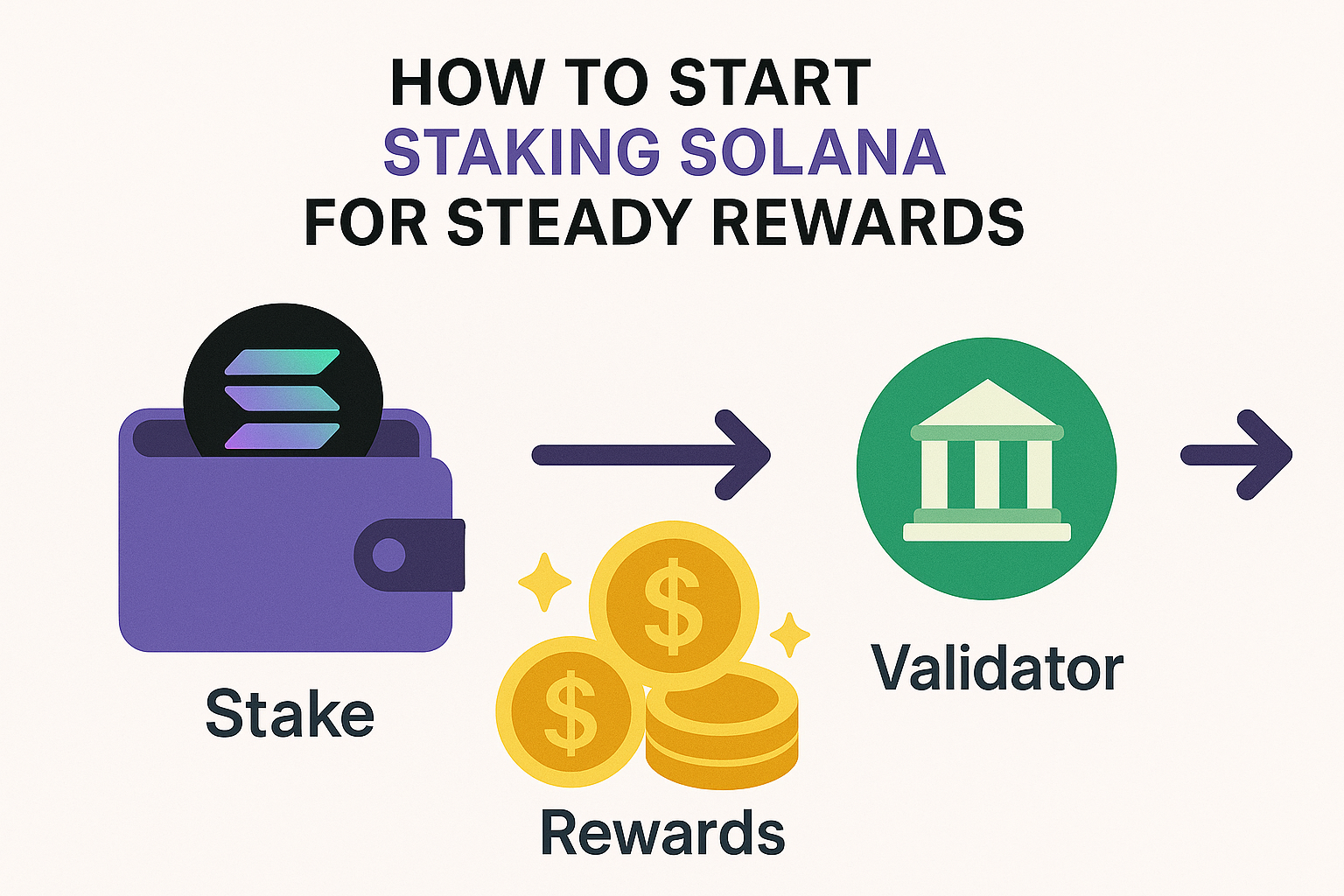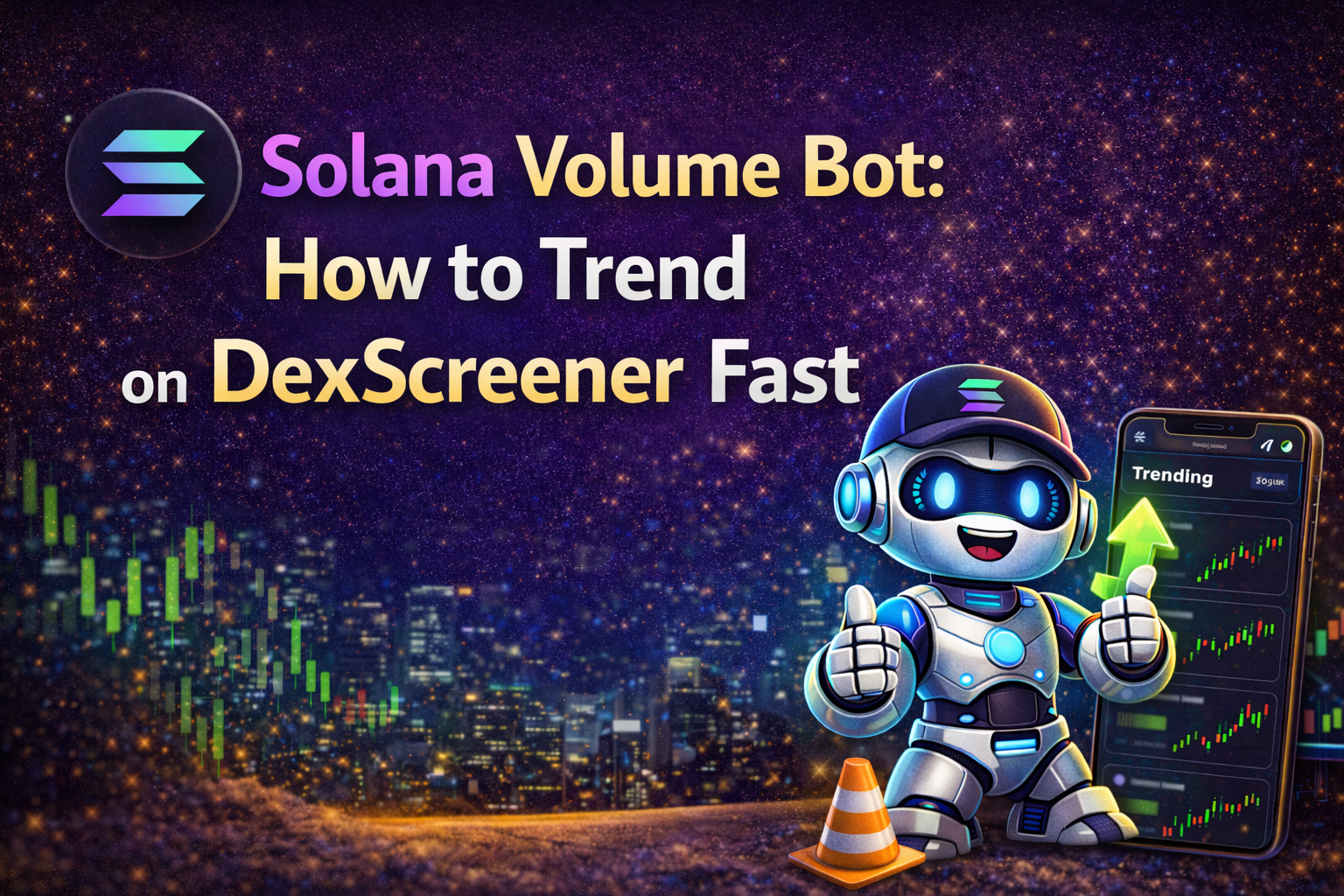Table of Contents
Starting the journey to earn passive income with my crypto assets felt like navigating through a maze. I was well aware that staking on blockchain networks held the potential to be incredibly rewarding, offering a way for cryptocurrency enthusiasts like myself to generate earnings independently from the volatile market swings.
It took some digging, but I uncovered that finding the right crypto trading app is key to unlocking these opportunities safely and efficiently. Let's explore this discovery together!
Key Takeaways
- Crypto staking lets you earn money by locking up digital currencies to support a network, offering rewards in return.
- The safety of your crypto and the ease of using an app are key when picking where to stake, with Binance, Coinbase, and Kraken being top choices in 2023.
- It's important to look at fees and expected returns before choosing a trading app for staking or lending to ensure maximum profit.
- Diversifying your portfolio through platforms that support multiple cryptocurrencies like Crypto.com can increase potential earnings.
- Being aware of legal and tax obligations is crucial when earning passive income from cryptocurrency to avoid surprises during tax season.
Understanding Crypto Staking
Crypto staking lets you earn money just by holding certain digital currencies. You lock up your funds in a subirimagenes cryptocurrency wallet to help support the network's operations, and in return, you get rewards.
What is Staking?
Staking is like putting my money to work in cryptocurrencies. I lock up some of my coins to help keep the network secure and efficient. In return, I get more coins as rewards. It's part of what they call proof of stake blockchains, which are different from the original proof of work system that Bitcoin uses.
Instead of using lots of computer power to mine new coins, staking uses the coins I already own.
This process isn't just about earning extra coins; it's crucial for keeping blockchain networks running smoothly. By staking my cryptos, I'm actually taking part in validating transactions and maintaining the integrity of the blockchain.
And yes, it comes with its set of risks like market value changes affecting returns or possible cyberattacks on crypto wallets or exchanges where my assets might be staked. But with tools like a cryptocurrency wallet for holding my stake and platforms such as Crypto.com offering rewards on many cryptocurrencies, it's an opportunity I've grown to appreciate for growing my digital asset portfolio without constant trading.
In staking, I contribute to blockchain security and earn passive income – a win-win in the digital currency landscape.
Benefits and Risks of Staking
After learning about staking, I found out it's a cool way to make passive income with my crypto. Staking means locking up my crypto coins to help the network run smoothly. In return, I get rewards, kind of like earning interest in a savings account.
It's great because I can earn more coins without doing much. Plus, by choosing platforms like Crypto.com, known for good rewards on various cryptocurrencies, I'm diversifying my portfolio which is smart investing.
But there are risks too. The value of my staked crypto can go down because of price fluctuations in the market. This means even though I'm earning more coins, they might be worth less over time if the prices drop.
There's also the chance that some projects might not be as secure as they claim to be. This could put my staked assets at risk of being hacked or lost.
I always use a crypto staking calculator before deciding where and how much to stake. It helps me see what returns I might expect based on different factors like annual percentage yield (APY) and how long I plan to stake my assets.
Making choices based on this info has made me feel more confident in understanding both the rewarding aspects and potential downsides of staking in decentralized finance (DeFi).
Key Features of Effective Crypto Staking Platforms
Good crypto staking platforms keep your digital money safe with strong security steps. They make buying, selling, and trading easy with a clear layout.
Security measures
I always check for top-notch security features on a crypto staking platform. It's vital to keep my digital coins safe from hackers. A platform must have two-factor authentication (2FA) and use hardware wallets for extra protection of our assets.
These tools add layers of security that make it hard for unauthorized users to access our funds.
Using platforms with proof of reserves ensures they have my back, offering peace of mind in the volatile world of cryptocurrency.
Plus, I look for exchanges that undergo regular audits. This transparency shows they manage our cryptocurrencies with care. With these measures in place, I feel more confident about earning passive income through staking without worrying about losing my investment due to poor security practices.
User interface and experience
I find that a good user interface makes a big difference in how I feel about using crypto trading apps. Apps that are easy to use make me want to explore more features, like staking and yield farming.
They guide me smoothly from one action to the next without confusion. If an app is too hard to figure out, I simply won't use it. The best ones have clear menus, helpful tips, and visual elements that show my portfolio's performance at a glance.
This makes managing my crypto investments less stressful.
Crypto.com caught my attention with its user-friendly design. Investing in various cryptocurrencies became straightforward because of its intuitive layout. This platform supports many digital currencies, making it easier for traders like me who want to diversify their portfolios with altcoins and stablecoins through on-chain staking or even liquidity provision for extra earnings.
Next up, let's discuss the importance of having support for multiple cryptocurrencies.
Support for multiple cryptocurrencies
I always look for crypto trading apps that handle lots of different digital currencies. This means I can keep all my assets in one place without having to switch between apps. A good platform supports not just Bitcoin and Ethereum, but also other altcoins and digital assets like NFTs (non-fungible tokens).
For me, diversity is key to spreading risk and potentially increasing returns.
Using platforms like Crypto.com, which earned its reputation as the top spot for staking multiple cryptocurrencies in 2024, I diversified my portfolio with ease. Their wide range of supported currencies allowed me to explore staking across various proof of stake blockchains.
This approach maximized my potential earnings and sharpened my understanding of the market dynamics. The real kicker was using tools like a crypto staking calculator to make informed decisions about where to park my coins for earning interests.
It turned out to be an effective strategy in managing risk while seeking dividends from diverse sources within the crypto exchanges.
Top Crypto Staking Platforms for 2023
In 2023, Binance and Coinbase lead the pack as top places for crypto staking. These platforms shine by offering easy ways to earn money on your cryptocurrencies.
Binance
I use Binance to earn passive income through staking because it supports a lot of different cryptocurrencies. This makes it easy for me to choose which ones I want to stake. The platform is secure, offering peace of mind that my digital assets are safe.
With its user-friendly interface, I can quickly find what I need and make decisions without getting lost in technical details.
Binance also has low fees compared to other platforms. This means more of the earnings from staking go into my pocket instead of paying for services. They offer competitive annual percentage yields (APYs) on a variety of coins, allowing me to diversify my portfolio and increase my chances of making a profit.
Using Binance has made me feel like I'm part of the decentralized finance (DeFi) movement, leveraging technology to make financial gains with little effort on my part.
Coinbase
Coinbase is one of the top platforms for crypto staking I found. It supports multiple cryptocurrencies, making it easy to diversify my portfolio. They have strong security measures, so I feel safe keeping my assets there.
Their user interface is also straightforward, which helps me manage my investments without confusion.
They offer a variety of staking options with competitive APYs. This means I can earn decent returns on my idle crypto tokens. Coinbase also provides clear information about any fees and risks associated with staking.
This transparency allows me to make informed decisions about where to stake my cryptocurrency for passive income.
Kraken
Kraken is one of my go-to platforms for staking cryptocurrencies. They offer solid security measures, making me feel safe about where I keep my digital money. Their user interface is easy to use, even for someone new to cryptocurrency exchanges.
This makes checking on my investments straightforward and hassle-free.
I appreciate their support for multiple cryptocurrencies because it lets me diversify my portfolio without needing to use several different apps. What stands out are the staking rewards on Kraken; they're competitive and provide a good balance between risk and return on investment (ROI).
From proof-of-stake blockchains to decentralized finance tokens, Kraken covers a wide range of options.
Staking on Kraken made earning passive income from my crypto holdings simpler than I expected.
Their fees are transparent too, which means I always know how much of my earnings will go towards platform costs. Plus, with tools like liquidity pools available, there's potential for even more income through interest rates specific to decentralized exchanges within their ecosystem.
Evaluating Platform Fees and Rewards
Comparing staking rewards and fees across apps helps me pick the best for my crypto. It makes sense to read on for deeper insights.
Comparison of staking rewards
I now compare the staking rewards of different platforms. This insight can help us all make better choices for where to stake our crypto for passive income.
Choosing where to stake depends on what coins you have and the returns you're after. Crypto.com stands out for its rewards across many coins. Next, I will discuss the fees these platforms charge.
Understanding platform fees
Choosing a crypto trading app for staking means looking at how much it will cost me. Every platform has fees, and these can eat into my profits if I'm not careful. Some charge for depositing money, others for withdrawing it, and most take a piece of my earnings from staking.
I always check the fee schedule before deciding where to stake my cryptocurrency tokens.
My experience taught me to watch out for hidden costs. For instance, while some apps advertise low fees, they might have high withdrawal charges or demand a percentage of my staking rewards as part of their platform fees.
This could make a big difference in how much passive income I actually get to keep.
I use tools like the crypto staking calculator to understand better what these fees mean for my potential earnings. It helps me compare different platforms based on what they'll really cost me after all their fees are accounted for.
Staying informed and choosing wisely means more money stays in my pocket.
The Role of Crypto Lending in Earning Passive Income
Crypto lending lets you earn extra money by loaning out your digital currency. Keep reading to find out more!
How crypto lending works
Crypto lending lets me loan my crypto to others through a decentralized finance (DeFi) platform. I choose how much to lend and for how long. This way, I earn interest on the loans, similar to how a savings account works in a regular bank.
The platforms use smart contracts, ensuring safety and trust between lenders like me and borrowers. These contracts automatically handle the loan's terms, repayments, and interest.
I find it exciting because it offers another way to make money from my crypto without selling it. Plus, by using platforms that support multiple cryptocurrencies for lending, I diversify my investment and reduce risk.
After setting up everything on a DeFi platform, I just watch as my digital assets generate passive income.
Unlocking the power of your digital assets through lending.
Now let's talk about risks associated with crypto lending.
Risks associated with crypto lending
Lending my cryptocurrency feels like a smart move to earn passive income, but it comes with its share of risks. The biggest fear is the risk of losing money if borrowers fail to repay their loans.
This can happen in DeFi lending platforms where collateral might lose value quickly due to market volatility. I also worry about the platform's security measures because hacks and scams are common threats in the crypto world.
Another concern is creditworthiness. Unlike traditional banks that check borrower's backgrounds thoroughly, some decentralized finance platforms don't dig deep into a borrower's financial stability.
This increases the chance that I won't see my money again if something goes wrong. Also, regulatory compliance plays a huge role here; sudden changes in laws could affect how these platforms operate or how much tax I owe on earned interest.
Using tools like a crypto staking calculator helps me understand potential returns, but it can’t fully remove these risks.
Liquidity Provision and Yield Farming
Liquidity provision and yield farming let you use your crypto to help others trade easily, earning you more money. Get ready to learn how this can boost your income.
Explaining liquidity provision
I use my crypto assets to help with liquidity provision. This means I put my digital money into a pool that traders can easily buy and sell from. It's like keeping fruits stocked at a market stall so people can always find what they need.
By doing this, I become one of many liquidity providers. We make trading smoother for everyone in the DeFi (decentralized finance) world.
Getting into this, I learned about terms like "liquidity mining" and "yield farming." These are ways to earn more cryptocurrencies by providing liquidity. It's not without its risks though; there's something called impermanent loss that happens when the prices change after you've added your funds to the pool.
Still, being part of a consensus mechanism that supports cryptocurrencies offers me a chance to grow my investments while supporting the DeFi space.
Benefits of yield farming
Yield farming lets me earn more crypto with the coins I already own. By lending my assets, I get rewards in new tokens. This process feels like getting paid dividends for holding stock.
The main draw is the high APY (annual percentage yield) it can offer compared to traditional savings accounts or investments. Yield farming also introduces me to a diverse range of new and upcoming cryptocurrencies, enhancing my portfolio.
In my journey, using platforms like Crypto.com has shown that picking the best place for staking matters a lot for rewards on many cryptocurrencies. It’s exciting to see my investments grow without needing to trade daily.
Passive income through yield farming has transformed how I view my crypto holdings.
Next, let's talk about choosing the right trading app.
How to Choose the Right Crypto Trading App
To pick the best cryptocurrency trading app, check its history and what other users say. This step helps you find a safe and easy-to-use platform that fits your crypto needs. Explore reviews to learn more!
Assessing credibility and track record
I look at a platform's history and reputation to choose the right crypto trading app for passive income. A good way is checking its track record with supported cryptocurrencies like Bitcoin and Ethereum.
Apps like Binance, Coinbase, and Kraken have proven themselves over time. They keep users' assets safe and offer various earning opportunities through staking or liquidity provision.
I also read user reviews on forums and Telegram channels. This helps me see how other traders feel about an app’s ease of use, security measures, and customer service. Real feedback gives insights beyond what the company says about itself.
For me, finding an app that combines reliability with a wide range of features for earning passive income is key. I prefer apps that support multiple digital assets and provide tools like a crypto staking calculator to plan my investments better.
User reviews and community feedback
I always check user reviews and community feedback before I pick a crypto trading app. These insights are like gold. They show what real people think after using an app for staking or earning passive income.
Good reviews often highlight easy-to-use interfaces, strong security, and helpful customer service. Bad ones may warn about high fees or slow support responses.
Feedback from forums like Reddit or social media can also give hints about which apps offer the best rewards for staking with proof of stake blockchains. This helps me avoid apps that don't support multiple cryptocurrencies, saving me from a headache later on.
Next up is understanding the legal side of things—how taxes work with crypto earnings.
Legal and Tax Consideration in Crypto Staking
For crypto staking, you'll need to understand taxes and follow the laws. This means knowing how much money you make from it can be taxed. Laws differ in each place, so what's okay in one country might not be in another.
Make sure to check out more on this topic!
Is passive income from crypto taxable?
Yes, passive income from crypto is taxable. I find this out by checking the rules in my area. The IRS says that income from mining, staking, or earning interest on crypto counts as income.
This means when I earn money through these methods, I must report it on my taxes. It's like how banks report interest earned to the tax office.
I use tools like a crypto calculator to keep track of what I might owe in taxes. Keeping good records helps me avoid surprises during tax season. Each time I earn rewards through staking or get interest payments from lending my digital currency, I note it down.
Paying taxes on my earnings ensures everything stays legal and clear with the authorities.
Compliance with local regulations
I make sure to check the rules in my area before I stake crypto. Every place has its own laws about earning money this way. Some places might tax your earnings a lot, while others have strict rules on how you can do it.
I found out that using tools like a crypto staking calculator helps me understand how much I might owe in taxes. This keeps me safe from breaking any laws without knowing.
Also, I always read up on the latest news about crypto regulations. Since these rules can change fast, staying updated means I won't get caught off guard by new taxes or legal issues.
Next, let's talk about how technology is changing the game for staking and trading apps.
Future Trends in Crypto Staking and Trading Apps
Crypto staking and trading apps will soon use more advanced tech. They might also follow new rules. Keep an eye out to stay ahead.
Technological advancements
I've seen firsthand how technology shapes the way we trade and stake crypto. New tools make earning passive income easier and safer. For example, mobile apps like Crypto.com have transformed my phone into a powerful trading tool.
I can manage my assets, track rewards, and access defi staking from anywhere.
Innovations in blockchain technology also play a huge role. Proof-of-stake (PoS) blockchains offer a green alternative to the energy-hungry proof of work systems. This means lower fees for me and less harm to our planet.
Plus, platforms now use liquid staking, letting traders earn rewards without locking up their assets for long periods. This flexibility has changed how I think about investing in digital currencies.
Regulatory changes
Governments around the world are starting to pay more attention to crypto trading. They want to make sure it's safe and fair for everyone. That means new rules are coming that could change how we use crypto trading apps.
Some changes might make things better, like making our investments safer. Other changes might make it harder to earn as much money from staking or lending.
I keep an eye on these updates closely. It's my job to understand what they mean for me and my crypto strategies. For instance, if a country decides you have to pay more taxes on your staking income, I need to know about it.
This way, I can plan ahead and maybe find other ways to earn passive income that won't cost me as much in taxes.
Knowing all this helps me choose the best crypto trading app that fits with the latest rules and gives me good returns too.
Ready to learn more about choosing the right app? Let's talk about finding one with features that matter most.
Conclusion: Maximizing Returns from Crypto Staking and Trading Apps
I learned a lot about making money with crypto without much effort. Choosing the right app for staking means looking at safety, how easy it is to use, and what kinds of digital money it lets you stake.
I found Binance, Coinbase, and Kraken stand out in 2023. They keep your digital cash safe while making the process straightforward. It's also wise to look at fees and rewards closely.
This helps me pick where my crypto can grow the most without losing too much on charges.
Apps like Crypto.com are top picks because they offer great rewards on various cryptocurrencies in 2024. But putting your coins into staking has its risks too. So I always think about how much risk I can handle before deciding where to invest my crypto for extra income.
In addition to staking, learning about lending digital currency and providing liquidity taught me more ways to earn passive income in this space. Yet legal stuff like taxes still needs attention from time to time.
To wrap up, finding the best app for my goals involves checking its history and what other users say about it while keeping an eye on changes in technology and rules around trading apps' future.








